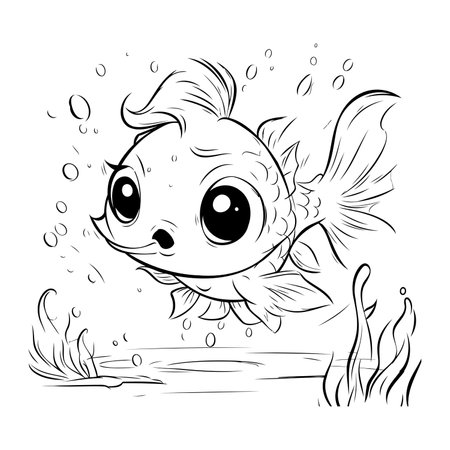Understanding Your Local Panfish
If you’re looking to enjoy a relaxing day of fishing from the shore or a boat, getting to know your local panfish is the first step toward success. Across the United States, bluegill, crappie, and perch are household names among anglers—and for good reason. These species thrive in ponds, lakes, and slow-moving rivers from coast to coast, making them accessible no matter where you call home. Bluegill are often the life of the party near weedy banks, while crappie prefer deeper waters with submerged structures. Perch tend to cruise along the edges of drop-offs or gather around sunken logs. Each species has its quirks: bluegill love warm shallow waters during spawning season, crappie make their move closer to shore in spring and fall, and perch bite best as temperatures cool off. Knowing when and where these fish gather—plus what triggers their appetite—can turn an ordinary shoreline trip into a memorable catch. Whether you’re casting worms under bobbers for bluegill or jigging minnows near brush piles for crappie, paying attention to seasonal habits will help you match your approach to what’s biting right now. Understanding your local panfish isn’t just about catching more fish; it’s about connecting with your water and enjoying the simple pleasures of American fishing traditions.
2. Shoreline Tactics: Gear Up the Right Way
When it comes to panfish fishing from the bank, the right gear can make all the difference between a quick outing and a truly memorable day. For most American anglers, a classic spinning combo—think a 56″ to 7 medium-light rod paired with a smooth 1000-2000 size reel—is perfect for targeting bluegill, crappie, or sunfish along your local shore. The beauty of these setups is their versatility and ease of transport; you can toss them in your trunk, strap them to a backpack, or even keep one handy in your garage for those spur-of-the-moment trips when the water’s calling.
Let’s break down some favorite shoreline combos and tackle choices that have stood the test of time across America. Whether you’re dropping a line at a small town pond or casting into your neighborhood lake, here’s how to gear up efficiently:
| Rod & Reel Combo | Tackle Type | Why It Works |
|---|---|---|
| Ultra-Light Spinning Combo | 1/32 oz jigheads + soft plastics | Ideal for casting light lures farther and feeling subtle bites |
| Medium-Light Spinning Combo | Bait hooks with nightcrawlers or live minnows | Versatile and effective for both active and passive fishing styles |
| Collapsible Telescopic Rod | Panfish bobber rigs (bobbers + split shot + small hook) | Great for portability; easy to carry on hikes or spontaneous stops |
Packing Smart for the Bank
Tackle Box Essentials
A compact tackle box filled with assorted hooks, split shots, bobbers, and a few packs of soft plastics covers just about any situation you’ll encounter from shore. If you want to go ultra-lightweight, try using a small utility pouch or repurposed lunchbox for your must-haves.
Quick Tips for Spontaneous Bank Fishing:
- Keep your rod rigged and ready in the car—just add bait when you arrive.
- Cinch your tackle bag straps tight so nothing jingles or spills as you walk to your spot.
- If you’re fishing urban parks or public spaces, check local regulations on bait types and keep things tidy—leave no trace!
With the right combo of classic American tackle and portable gear, every trip to the shoreline has the potential to become an unforgettable fishing story—whether it’s sunrise solitude or an after-work adventure with friends.
![]()
3. Reading the Bank: Scouting Out Hotspots
Every shoreline has its own personality, and knowing how to read it is half the fun of panfish fishing. If you’re walking along an American lake or river, keep your eyes peeled for classic hotspots like docks, weedbeds, and old submerged logs. Panfish—like bluegill, crappie, and perch—are social little guys that love these spots because they offer shelter and food. Look for docks where there’s a mix of shade and sunlight; fish often school up in the shadows during midday heat. Weedbeds are another favorite, especially where the green growth meets open water—panfish will dart in and out, snacking on insects and tiny baitfish. Submerged logs might seem like debris to some folks, but to a savvy angler, they’re prime real estate. Approach quietly, cast close to the structure, and let your bait drift naturally. Don’t be afraid to move around—sometimes the best spot is just a few steps away! In true American style, bring along your curiosity and a bit of patience; sometimes scouting out those fishy hideouts is as rewarding as landing the catch itself.
4. Easy Baits and Local Lures
When it comes to catching panfish from the shore or a small boat, simplicity often wins out over fancy gear. American anglers know that you don’t need to break the bank to have a successful day on the water. The right bait and lures, many of which have been favorites for generations, can make all the difference.
Simple, Reliable Bait Choices
Panfish are notorious for their willingness to bite on basic offerings. Here’s a quick look at some of the classic baits that consistently produce results:
| Bait | Why It Works | How to Use |
|---|---|---|
| Worms (Nightcrawlers, Red Wigglers) | Natural scent and movement attract most panfish species. | Thread onto a small hook under a bobber; great for bluegill and crappie. |
| Canned Corn | Bright color and sweet taste are irresistible, especially to sunfish. | Place 1-2 kernels on a small hook; works well near docks and weed edges. |
| Small Jigs (1/32–1/16 oz.) | Mimic tiny prey like insects or minnows, versatile in any water. | Bounce along bottom or swim slowly through shallow areas. |
Classic American Lures That Locals Love
If you want to fish like a local, pay attention to the tried-and-true lures that have stood the test of time across America’s lakes and rivers. Here are some favorites:
- Beetle Spin: This simple spinnerbait is perfect for beginners and experts alike. The flash and vibration attract curious panfish from far away.
- Mini Crankbaits: Small floating crankbaits in natural patterns work wonders around submerged structures where panfish hide.
- Tiny Tube Jigs: Especially popular in the Midwest, these soft plastics mimic aquatic insects and can be fished with or without added scent.
A Local Tip
If you’re fishing a new spot, don’t hesitate to stop by a nearby tackle shop or talk with locals at the boat ramp. They’ll often point you toward what’s biting best—sometimes it’s as simple as a worm on a hook, other times it might be a specific lure color that matches local forage. Keeping your approach simple and following local wisdom will keep your shoreline panfish adventure fun and productive.
5. From Land to Water: Wading and Launching Small Boats
If you’re ready to go beyond the shoreline, expanding your reach can open up a whole new world of panfish opportunities. Whether you’re pulling on a pair of waders or sliding your jon boat into a secluded pocket, a little know-how goes a long way toward making these transitions safe and productive—just like seasoned American anglers do from coast to coast.
Wading: Stepping Carefully Into New Territory
Wading is one of the most rewarding ways to get closer to the action, especially in shallow lakes, ponds, or gentle riverbanks where panfish often cruise. Safety comes first: always check water depth with a sturdy stick before stepping in, wear a snug-fitting life vest if you’re not sure about currents, and choose waders suited for the season. Neoprene keeps you warm in spring and fall, while breathable options are perfect for summer. It’s smart to shuffle your feet as you move—this stirs up less sediment and alerts any critters (like snakes or snapping turtles) that you’re coming through.
American Pro Tip:
Keep a small tackle box clipped to your belt with just the essentials—bobbers, jigs, hooks—so you don’t have to trek back to shore every time you want to switch things up.
Launching Small Boats: Jon Boats, Kayaks, and Canoes
Sometimes, the best panfish spots are just out of casting range from shore. That’s when a lightweight jon boat or kayak really shines. To launch safely and quietly (panfish spook easily!), back your vehicle down the ramp slowly, unload gear ahead of time, and push off gently without banging paddles or anchors around. Always keep a PFD handy—and for those hidden coves or lily pad patches, use a paddle rather than a motor for stealthy approaches.
Hidden Cove Know-How:
Bring along an anchor or stake-out pole so you can stay put once you find a school of bluegills or crappie without drifting away on the breeze.
Respecting Local Waters
No matter how you access the water, be mindful of posted regulations about wading or boating in certain areas. Many American lakes have designated boat launches and marked “no wake” zones—following these rules keeps everyone safe and preserves our favorite fishing spots for generations to come.
By transitioning smoothly from bank to water with practical safety measures and local know-how, you’ll discover new panfish honey holes that most casual anglers never see—all while soaking in the simple joys of fishing American waters.
6. Keeping it Fun and Friendly: Community, Conservation, and Panfish Etiquette
Panfish fishing across America is more than just catching a stringer full of bluegill or crappie—it’s about joining a tradition that values good times, shared stories, and respect for our waters and fellow anglers. Whether you’re casting from the local dock or drifting quietly along a shaded shoreline in your boat, embracing the camaraderie of the fishing community is part of what makes each outing memorable.
Respecting Other Anglers
When you’re out there—bank or boat—give everyone some space. It’s common courtesy to avoid crowding someone else’s spot or cutting in with your cast. A friendly “hello” goes a long way; so does offering help to a beginner or swapping a story with someone reeling in their first panfish. Remember, everyone’s here to enjoy the outdoors, and a little friendliness can turn strangers into fishing buddies.
Conservation Matters
Panfish may be plentiful, but they still need our care to thrive for generations to come. Only keep what you plan to eat fresh—release the rest gently back into the water. Handle fish with wet hands, use barbless hooks when possible, and be mindful of spawning beds in spring. Picking up trash (even if it isn’t yours) helps keep shorelines inviting for all who visit after you.
The Unwritten Rules of Panfishing
There’s an etiquette to every good fishing trip. Don’t blast loud music from your boat or leave tackle sprawled across popular banks. If you’ve got kids along, teach them how to untangle lines and share the dock. Celebrate each catch—big or small—and cheer on others’ success too. A positive attitude makes every outing better, even if the bite is slow.
Leaving Good Memories Behind
At the end of the day, panfish outings are about more than filling a cooler—they’re about creating stories worth retelling at backyard cookouts or around campfires. By respecting other anglers, practicing smart conservation, and keeping things lighthearted, you’ll help make America’s lakes and rivers welcoming places for everyone who dreams of that next tug on the line.


